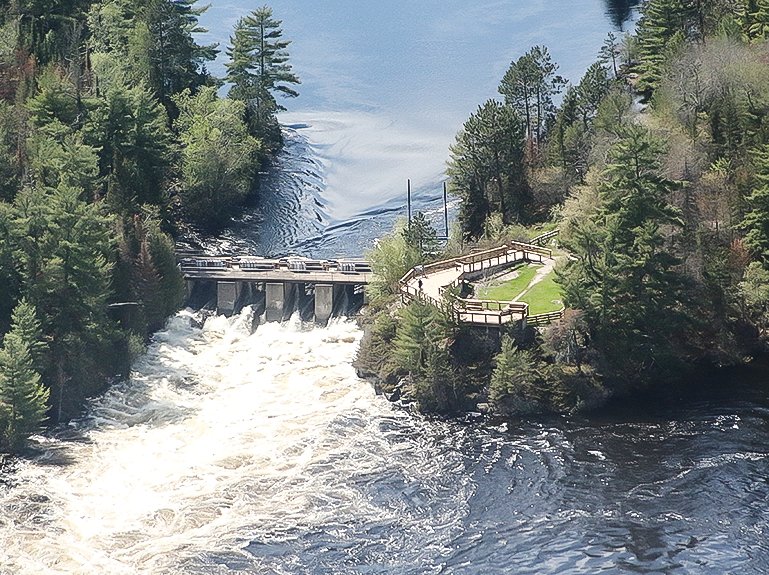Support the Timberjay by making a donation.
Rainy River basin lake level targets lowered
A response to increased risk of spring flooding
REGIONAL— The International Rainy-Lake of the Woods Watershed Board (IRLWWB)’s Water Levels Committee (WLC), the group responsible for recommending lake levels for Rainy and Namakan …
This item is available in full to subscribers.
Attention subscribers
To continue reading, you will need to either log in to your subscriber account, below, or purchase a new subscription.
Please log in to continue |
Rainy River basin lake level targets lowered
A response to increased risk of spring flooding
REGIONAL— The International Rainy-Lake of the Woods Watershed Board (IRLWWB)’s Water Levels Committee (WLC), the group responsible for recommending lake levels for Rainy and Namakan Lakes, decided last week to target slightly lower levels for April 15 in response to an above-average risk of spring flooding.
At its March 27 meeting the WLC approved an upper level target of 336.83 meters, or about 1.5 inches lower than the committee had approved back on March 10. It lowered the upper level target on Namakan to 339.21 meters, or about 2.75 inches below its March 10 decision. Lower lake levels increase the holding capacity of the lakes to accommodate anticipated snowmelt and spring runoff.
The committee met with personnel from the Duluth National Weather Service office, the Ontario Ministry of Natural Resources and Forestry- Surface Water Monitoring Centre, and dam operators for their latest assessment, and cited numerous factors that played into its decision to lower the upper target levels, as described in an IRLWWB news release:
Recent snow events have increased current snowpack since March 10.
Snow-Water Equivalent (SWE) remains slightly above normal to much above normal in the Rainy River basin, with higher amounts occurring in the eastern areas of the basin and decreasing closer to normal moving west.
River forecast models from the North Central River Forecast Center indicate higher chances of greater than normal streamflow volume, especially in the Rainy River headwaters.
The latest spring flood risk outlook from the National Weather Service, issued on March 23, indicates an increase in spring flooding risk compared to the previous outlook on March 10.
Short term forecasts do not indicate melt occurring through the first week of April (temperatures leaning below normal and precipitation leaning slightly above).
Rule curve change
This new range represents the bottom 25 percent of the committee’s rule curve, a range of targeted high and low levels determined by historical lake level data that shifts up and down depending on the time of the year, with lake levels trending upward beginning in April and extending through the summer before declining into the fall and winter. Dams controlling the lake levels are operated to keep the lakes within the range established by the rule curve at levels determined by the WLC.
When it came time for the committee’s decision last year, members opted for the normal rule curve rather than the high flood risk curve. That decision came under fire from some in the surrounding lake communities as the waters rose uncontrollably in May due to heavy precipitation and snowmelt. Through post-flood public meetings, it was discovered that a minority of people mistakenly believed that the rule curves were designed to prevent floods or perceived the high flood risk curve as an “emergency rule curve.” According to the WLC’s post-flood report, the high flood risk rule curve was only intended to provide modest mitigation under minor to moderate spring flood risk scenarios, and using it would have made almost no difference in the levels of flooding experienced in the Rainy River basin last year.
This year, to clear up the potential confusion and also give the committee more latitude for its decision-making, the two separate rule curves have been combined into one, while allowing for a wider range of levels.
The WLC was made aware of concerns from residents regarding the risk of not being able to refill Namakan Lake to normal levels by the second week in May for the fishing opener. With the higher snow-water equivalent in the headwaters flowing into Namakan Lake, the risk of not refilling the lake has decreased.
An online public information session will be held on April 11 to provide an updated summary of basin conditions and seasonal forecast information as part of the spring regulation plan. Individuals can register for the session at https://tinyurl.com/4xz3kzbh.
The WLC will continue to monitor conditions over the coming weeks and provide further direction for lake level regulation when necessary.






